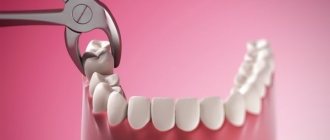The most important thing is to remain calm
If a person is frightened by the sight of blood, he should ask someone around him for help. If this is not possible, you should overcome yourself, calm down and begin to fix the problem. In cases where the bleeding does not stop for a long time, it is important to take certain measures.
If you need to quickly eliminate bleeding, so as not to stain something with blood during work that cannot be postponed until the bleeding stops naturally, you can use finger pads sold at the pharmacy (in case your finger has been cut). In addition to preventing blood from getting into unwanted places, it will help stop bleeding from the finger due to the compression effect provided by the rubber ring.
What to do if you cut yourself? How to quickly stop bleeding?
We encounter cuts in everyday life very often. Any carelessness when working with sharp edges of a knife, razor blade, or broken glass can result in damage to the integrity of the skin and bleeding. In most cases, medical intervention is not necessary, but it is necessary to know how to stop the bleeding from a cut, treat the wound and promote its rapid healing
What should you do when you get a cut?
Any assistance in the event of a wound should include the following measures:
- to stop bleeding from a cut;
- to prevent the introduction of dangerous microorganisms into the wound surface.
Trauma causes mechanical damage to the blood vessels, so blood flows for some time. There is its own protective mechanism for platelets to stick together and stop bleeding. However, this takes time. To speed up wound healing, prevent the entry of germs, relieve pain and quickly stop bleeding, use EverLife Hemo.
If the wound is superficial:
We get small cuts from the blade of a knife, razor, or cat claws. The fingers are most often affected. The developed superficial blood supply system to the hands and feet always causes bleeding during external injuries.
After the cut you need to:
- Place the injured part of the body under a cold stream of water. This will help to wash the wound, if the contamination is not severe, and will contribute to the narrowing of blood vessels.
- Press the wounded finger with a clean napkin and hold for 5-6 minutes. Compression helps the development of thrombosis of small vessels and stops bleeding.
- Treat the edges of the wound with green paint and apply a bactericidal patch for several hours.
- You can disinfect with a hydrogen peroxide solution by moistening a cotton swab and applying it to the wound.
- Or simply apply an EverLife Hemo bandage, which will quickly stop bleeding, prevent the entry of germs, relieve pain and promote wound healing.
What not to do:
If you cut your hand until it bleeds and you are unable to clean the wound from glass shards or other substances, you should not try to expand the edges of the wound and remove the contamination yourself. You need to apply a tight pressure bandage and consult a doctor immediately.
If the cut becomes dirty:
Cuts can occur when working in the garden, when swimming in bodies of water (on glass or a shell at the bottom). In this case, the risk of infection increases significantly, even if the cut is shallow. The stronger the cut, the more careful you should be in processing. Washing the wound with plain water is not enough. You need to use any solution or wipes with an antiseptic. The edges of the wound should be treated with green paint, a sterile pressure bandage should be applied, the limb should be rested and placed in an elevated position.
If the bleeding does not stop, or there is a danger that the wound has not been sufficiently treated for infection, you should consult a surgeon. He will check the condition of the wound and carry out additional treatment.
Maybe you'll like it
Hemostatic agent "EversLife-Hemo"
Anti-burn agent "EversLife-SP"
Wound healing agent "EversLife-Gel"
Wound dressing Vilovond POVI Pad
What does prolonged bleeding from a finger indicate, procedure
If the bleeding does not stop, certain first aid measures should be taken. Unintentional injuries to the skin on the fingers and hands are a fairly common occurrence resulting from careless and improper use of a compass, screwdriver, hammer, knife or any other piercing or cutting object. In such a situation, it is important to strictly follow simple instructions that will prevent the development of further complications.
What to do when the bleeding doesn't stop?
First aid for injuries and bleeding
A person who finds himself in such a situation should maintain a sound mind and try not to panic. It is important to take the following steps to stop bleeding:
- First, you need to remove debris from the wound, dirt particles, and remnants of the object that caused the cut (for example, if it is glass). This is not difficult to do in most cases. As a rule, all that is required is to wash your hands under running, cool water.
- After this, the wound should be treated using an antiseptic. The most accessible antiseptics are hydrogen peroxide, brilliant green, and alcohol. If possible, it is better to use the first remedy, since this one effectively disinfects the wound without causing severe pain. Iodine should not be used to treat a cut, as it greatly dries the skin and interferes with natural healing, creating a crust that cracks over time and causes additional difficulties with regeneration.
- It is important to find out in advance what to do if the bleeding does not stop. If the wound resulting from an accident is not very deep, it is recommended to wait a little to allow some blood to flow out. This will allow dirt to naturally move away from the cut. To stop bleeding from a small wound, it is recommended to hold a tampon soaked in an antiseptic drug on the wound for several minutes.
- After the bleeding has stopped, apply a bandage or adhesive plaster to the cut. However, it should be remembered that they interfere with air access, which complicates the regeneration process. Therefore, you should not keep the bandage on the wound for a long time.
- In some cases, after removing the tampon with an antiseptic, blood continues to flow from the wound, and quite heavily. In such a case, you should wrap the wound well using a bandage. If blood continues to flow, the person should seek help from the nearest medical facility.
- In severe cases, you can put your hand in ice or apply something cold to the wound to stop the bleeding. It is important to remember that the injured area should not come into contact with moisture. That is, ice or a bandaged limb must be placed in a plastic bag. This recommendation is based on the fact that under the influence of cold, blood vessels narrow and, as a result, blood stops.
- It is also possible to use a special glue that allows you to connect the skin and thereby stop the bleeding. You can purchase the product at almost any pharmacy. However, in difficult situations, such assistance is only temporary. That is, if you receive significant cuts, you should go to the emergency room, where specialists will stop the bleeding and stitch up the cut site.
So the bleeding doesn't stop. The reasons for this are given below.
Bleeding from the socket after tooth extraction
Often, after tooth extraction, bleeding occurs from the socket (hemostasis), which occurs due to rupture of ligaments and capillaries (blood vessels). The complication may appear immediately, or maybe after a few days. Hemostasis can be stopped using a gauze pad, which the doctor places on the bleeding area for 15-20 minutes. During this period, a clot forms in the socket, after which the bleeding usually stops. If this does not happen, then stopping is done in other ways: by suturing with catgut, using hemostatic paste (sponge), applying fibrin film, or using special preparations in the socket.
Recommendations after tooth extraction
After the tooth is removed, the patient is allowed to go home if there is no bleeding from the socket. The doctor gives the patient the necessary recommendations, which must be strictly followed. If these rules are followed correctly, bleeding can be avoided.
- At least three hours should pass from the moment of tooth extraction to the first meal.
- It is strongly recommended not to smoke within three to five hours after tooth extraction.
- On the day of surgery, avoid physical activity and lifting heavy objects.
- Also, on the day of removal, you should not eat hot food, steam or take a hot bath.
- When brushing your teeth, be especially careful on the side where the tooth was removed.
- Do not take medications that contain aspirin (this drug thins the blood).
- The next day after surgery, carefully rinse your mouth with a warm, weak solution of potassium permanganate, chlorhexidine or furatsilin. This cannot be done on the day of removal.
- To speed up healing, you can carefully rinse your mouth with decoctions of medicinal herbs (chamomile and sage), and also lightly lubricate it with sea buckthorn oil.
- Do not touch the wound with your fingers (even your tongue), stay as far away from drafts as possible.
It often happens that bleeding from the socket appears several days after the operation. There may be several reasons for this: a complex removal procedure, accidental injury, poor blood clotting, a jump in blood pressure, problems with a herbal clot, as well as failure to follow the rules recommended by the doctor.
How to stop bleeding from a socket after tooth extraction
If bleeding from the socket of an extracted tooth occurs far from the clinic, then you can stop the bleeding at home yourself. To do this, you need to use the following method: make a thick tampon from a sterile medical bandage, moisten it slightly (preferably with lukewarm boiled water), then carefully apply it to the bleeding area and close your teeth. The tampon should not be too large, otherwise it will put too much pressure on the blood vessels. Then take a quiet position, sitting or lying down, and try to relax while continuing to close your teeth.
You can also replace the tampon with a bag of black tea - thanks to the tannins included in the composition, the blood stops faster. But if these methods do not help, then it is possible that a large vessel is damaged. Then you can try this method: mix one spoon of salicylic acid solution with two spoons of peach oil and seven spoons of beeswax. Heat the mixture to a boil, cool, pipette and drop into the well. The mixture will harden and turn into a protective film that will stop the bleeding. It is better to place a cotton swab on top of the resulting film.
If this method does not help, and the bleeding does not stop, contact a specialist immediately! Otherwise, everything can end in blood loss and even life-threatening.
What could be the reasons for prolonged bleeding?
The most common reason for the inability to stop bleeding is impaired blood clotting. This problem is caused by pathological changes in plasma proteins.
Such situations may arise due to a hereditary or acquired disease, for example, von Willebrand disease or hemophilia.
Eliminating such pathologies is not always easy or possible, so it is necessary to seek urgent help from a highly qualified specialist.
What diseases cause bleeding disorders?
Why doesn't the bleeding stop? Bleeding disorders can also occur for other reasons. Among them:
- Thrombocytopenia.
- Use of medications.
- Damage to liver cells.
- Anemia.
- Lack of vitamin K in the body.
When asked why the bleeding does not stop for a long time, experts answer that if insufficient coagulation is excluded, then, most likely, the depth of the cut turned out to be greater than it seems, and damage to large capillaries occurred. An example of such cases is when blood does not flow out, but drips in large dark drops. This indicates damage to the vein
Treatment of this pathology
In cases of severe blood loss, doctors' recommendations boil down to the use of iron-based drugs and blood transfusions. During the latter process, the patient is compensated for the lack of blood using donor blood. It is important to consider that it must be completely suitable for a particular patient, and the transfusion procedure is carried out exclusively in a hospital setting under the close supervision of a doctor.
In addition, difficulty in stopping bleeding may occur if the patient has high blood pressure. Therefore, if possible, it should be measured immediately.
Depth of damage
Thus, if the bleeding does not stop for a long time, then there are reasons for it. The simplest explanation may be the severe depth of damage. In addition, the reason may lie in poor blood clotting. If a minor injury causes prolonged bleeding, you should visit a doctor to find out the cause. As a rule, experts first recommend donating blood samples for a coagulogram. Undoubtedly, the doctor will first stop the bleeding.
A tooth was pulled out and the bleeding doesn’t stop: what to do?
A tooth was pulled out and the bleeding doesn’t stop: what to do?
Contents: • Bleeding is a complication after dental surgery • What should not be done after tooth extraction?
• What can you do at home? • Professional help from a dentist Tooth pulled out
– the bleeding doesn’t stop, why does this happen? Tooth extraction is a dental surgery that is performed in a clinic. Any operation is accompanied by some blood loss. Tooth extraction is no exception, as damage to gum tissue and periosteum occurs.
Bleeding is a complication after dental surgery
Socket bleeding can be quite difficult to stop. This problem occurs not only immediately after the operation, it can appear within a day.
Let's look at the reasons for this condition:
1. If the problem occurs immediately after removal, then this may be due to the fact that adrenaline has stopped working, and this provokes vasodilation. 2. If bleeding began after a certain time, then a common cause is the patient’s incorrect actions, which caused damage to the clot in the socket.
Local reasons include:
• damage to a wound or gum; • violation of the integrity of the interroot septum; • inflammation that has begun in the gum area at the site of the extracted tooth; • damage to the blood vessels located under the tongue. Common causes are mainly the patient's diseases, such as: scarlet fever, sepsis, blood diseases, hepatitis, hypertension.
What should you not do after tooth extraction?
After any surgical intervention, certain rules should be followed so as not to cause undesirable consequences.
For several hours it is prohibited:
• drink alcoholic drinks of any strength, because alcohol promotes vasodilation; • smoke; • Eating; • rinse your mouth with any liquid; • steam or take a hot shower, bath; • engage in physical labor or exercise in the gym.
How long does it take for blood to bleed from the socket?
A full-fledged clot is formed within 20 - 30 minutes.
If the bleeding continues when the patient is already at home, then there is cause for concern, so it is better to call the doctor and follow his recommendations. It is worth noting that some people confuse bleeding with ichor, which can be released from the wound for several hours after the removal procedure. If the secreted liquid is colorless or yellowish with a small amount of blood mixed in, then this is ichor. In this case there is nothing to worry about.
What can you do at home?
If bleeding begins after tooth extraction, and for some reason it is not possible to contact the dentist, then you need to help yourself.
The following manipulations may help solve the problem:
• A sterile swab should be placed on the resulting depression, then clamped with your teeth and held for approximately half an hour.
• If the bleeding does not stop, the tampon should be changed to one moistened with a 3% hydrogen peroxide solution, which helps stop the bleeding. • You can try applying cold to the cheek from the side of the extracted tooth. Cold constricts blood vessels, which helps eliminate this problem. Just remember: you can’t apply anything cold directly to the wound, as these actions can cause complications. • If the pain in the gum area is severe, then you can take painkillers, but without aspirin. This medicine thins the blood, which may cause bleeding. If the listed remedies do not produce results, and a person develops weakness or dizziness, then a visit to the dentist should not be postponed.
Professional dental care
The doctor will assess the situation and take action to stop the bleeding. What should a patient be prepared for? If there is bleeding from the soft gum tissue, the dentist may use sutures to close the wound.
If blood flows out of a blood vessel, then a tampon soaked in a special agent is placed into the tooth wound, the vessel is compressed, and the tampon is left in the hole for 5 days.
If the use of local remedies is ineffective and the bleeding does not stop, then the doctor may prescribe general medications that accelerate blood clotting. But the use of these medications is possible only after examination and testing.
Prevention of bleeding
To reduce the risk of all kinds of complications, you must adhere to some rules before tooth extraction: • Approximately two days before surgery and after, you should definitely stop smoking. • If the patient has hypertension, it is necessary to take medications to stabilize blood pressure, and also measure it before and after this dental procedure. • If the patient is taking blood thinning medications, they should be stopped a few days before surgery as they reduce blood clotting.
Procedure for bleeding that does not stop for a long time
So, if the bleeding in a child or an adult does not stop, the procedure should be as follows:
- The damage must be treated to prevent infection. You can use a cotton pad and any antiseptic for the procedure: brilliant green, hydrogen peroxide, alcohol.
- After this, you should stop the bleeding by bandaging the damaged area with a sterile bandage.
- In cases where bleeding continues, apply a tourniquet and seek medical attention. It is important to remember that you can apply the fixative for a maximum of 1-2 hours. In addition, the time of application of the tourniquet should be recorded and reported to the physician who will provide assistance.
A timely visit to a specialist will allow you to avoid serious consequences and find out at an early stage the reason why the bleeding is not stopping well.
Plantain will not help - seven myths about first aid
The most famous myths are debunked by the deputy chief freelance specialist for ambulance, emergency medical care and disaster medicine of the Moscow Health Department, Alexey Bezymyanny.
1. For severe burns, including sunburn, it is enough to spread a thick layer of sour cream or butter on the skin.
Alexey Bezymyanny: This is not so! Applying oil or sour cream to damaged tissue can lead to wound infection. The correct action in serious cases is to apply ice and go to the emergency room or hospital.
2. When the temperature is high, you need to wrap yourself in a blanket and sweat.
Alexey Bezymyanny: Not true again. If you wrap yourself in a blanket at a high temperature, it will jump even higher. It is better to use physical cooling methods. For example, wiping with a towel moistened with cool water.
3. For mild bleeding, plantain helps a lot.
Alexey Bezymyanny: Myth. In this case, an ordinary finger will be more effective: you press it on a small cut or wound, and after a few minutes the bleeding will stop. The main condition is to remember to wash your hands thoroughly!
4. When bleeding from the nose, you need to raise your face, throwing your head back.
Alexey Bezymyanny: In fact, you need to apply something cold to your nose and insert tampons soaked in hydrogen peroxide into your nostrils. If the bleeding does not stop, run to the hospital again.
5. In case of severe bleeding, you need to apply a tourniquet as quickly as possible, no matter how.
Alexey Bezymyanny: And this, strictly speaking, is generally a very dangerous misconception. Application of a tourniquet often leads to traumatic damage to blood vessels and nerves, which can result in tissue ischemia and even gangrene, including amputation of the limb.
Doctors apply a tourniquet only as a last resort, in case of bleeding from a large artery or vein. In all other cases, a pressure bandage is applied or the bleeding is stopped with a finger.
6. If, during bleeding, the bandage on the wound becomes saturated with blood, it must be removed immediately.
Alexey Bezymyanny: No way. In this situation, a new bandage is applied over the old one.
7. In case of an accident, it is imperative to move the victims to a safe place.
Alexey Bezymyanny: The first thing to do in the event of an accident is to make sure of your own safety. Fence the scene of the accident, place emergency signs and make sure that fuels and lubricants do not threaten your life. The movement of the victim occurs only as a last resort and with careful fixation of the neck and head. Why? The victim's spine may be damaged. The slightest movement with such an injury can lead to disability or even death.
Material from the publication “Rossiyskaya Gazeta”










